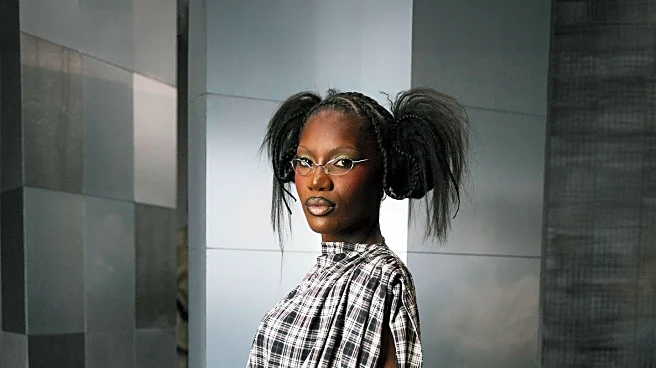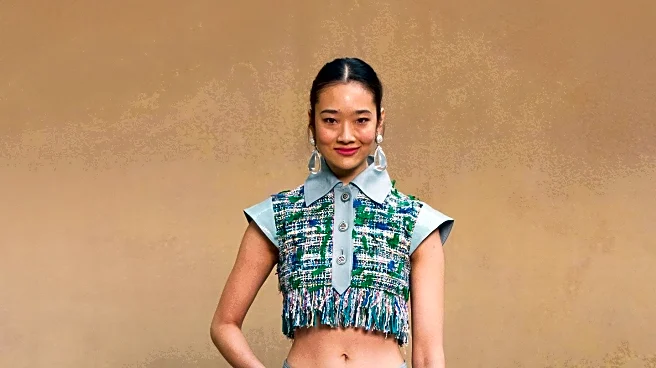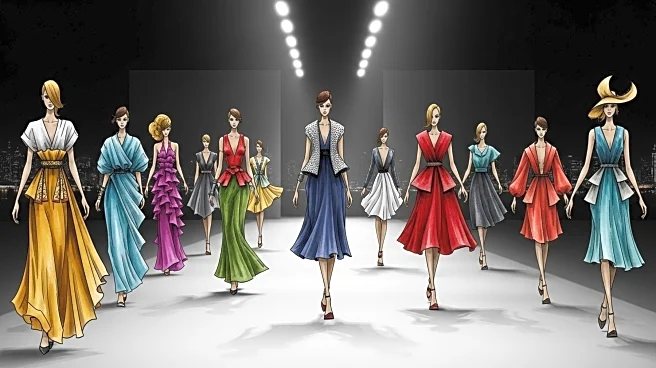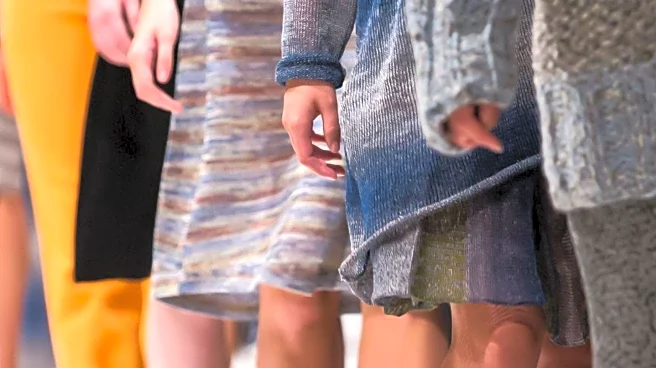What's Happening?
Collina Strada presented its Spring 2026 Ready-to-Wear collection at a unique venue on a helipad in downtown Manhattan. The show featured models walking in pairs, each accompanied by a 'shadow' model, symbolizing the policies, histories, and systems that follow us. Designer Hillary Taymour explained that the shadows represent both the past and a way to move forward with light. The collection showcased voluminous designs, including empire-waist tops and balloon cargo pants, with a focus on sustainability through upcycling. Taymour's innovative use of fabrics was highlighted by a blue plaid coat with frayed square cut-out appliqués, demonstrating her commitment to not wasting any fabric scraps.
Why It's Important?
The Collina Strada Spring 2026 collection reflects a growing trend in the fashion industry towards sustainability and social consciousness. By incorporating upcycled materials and addressing historical and systemic issues through fashion, the collection aligns with consumer demand for ethical and environmentally friendly practices. This approach not only enhances the brand's reputation but also sets a precedent for other designers to follow. The emphasis on sustainability and social themes could influence broader industry practices, encouraging more designers to adopt similar values in their work.
What's Next?
As the fashion industry continues to evolve, Collina Strada's approach may inspire other designers to explore themes of sustainability and social responsibility in their collections. The success of this show could lead to increased consumer interest in brands that prioritize ethical practices. Additionally, the innovative use of fabric and design techniques may prompt further experimentation and creativity within the industry, potentially leading to new trends and standards in fashion design.
Beyond the Headlines
The use of 'shadow' models in the Collina Strada show highlights the potential for fashion to address complex social issues. By making invisible systems visible, the collection encourages dialogue about the impact of historical and systemic factors on contemporary society. This approach not only enriches the narrative of the collection but also positions fashion as a medium for social commentary and change. The emphasis on sustainability further underscores the industry's role in promoting environmental responsibility, potentially influencing consumer behavior and industry standards.











